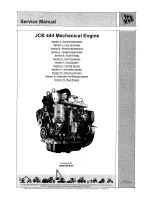
Maintenance Inspections
Teledyne Continental Motors, Inc.
TM
7-52
IOF-240 Series Engine Maintenance Manual
Change 1
31 August 2007
7-4.6. Contaminated Fuel System
The engines described in this manual are certified for operation with 100-LL Blue or 100
Green aviation fuels. If a lower octane or incorrect grade of aviation fuel or jet fuel is
used, perform the following procedure:
Procedure
1.
Do not fly the aircraft.
2.
Drain the fuel system completely.
3.
Service the fuel tanks in accordance with the aircraft manufacturer’s instructions.
4.
Disassemble, clean, and inspect the engine in accordance with instructions in the
Overhaul Manual (OH-22).
5.
Inspect and purge the aircraft fuel tanks and fuel lines of all contamination to prevent
malfunction of the Fuel Injection System and damage to its components.
6.
Reassemble and test the engine as directed in the Engine Assembly and Post-overhaul
Testing chapters in the Overhaul Manual (OH-22).
7-4.7. Abnormal Ferrous Material in Oil Analysis
See “Excessive or Abnormal Engine Noise”
7-4.8. Excessive or Abnormal Engine Noise
If abnormal noise is coming from the engine valve gear or if abnormal amounts of iron
and/or steel are detected by oil analysis, oil filter element or screen examination, oil
suction screen examination, or magnetic drain plug examination, TCM recommends a
lifter and camshaft lobe inspection. This is not a scheduled inspection and only required
if audible noise from the valve gear.
7-5.
Inspection Checklists
Inspection checklists are included as a convenient record of inspection progress and
findings. Using a copy of the form ensures a blank form will be available for the next
scheduled inspection. When an inspection is due, make a copy of the inspection checklist
to record inspection progress and findings while following the steps in the inspection
procedures. The checklists are not designed to replace the procedures; only augment
them. File the completed checklists in the aircraft logbook.
















































